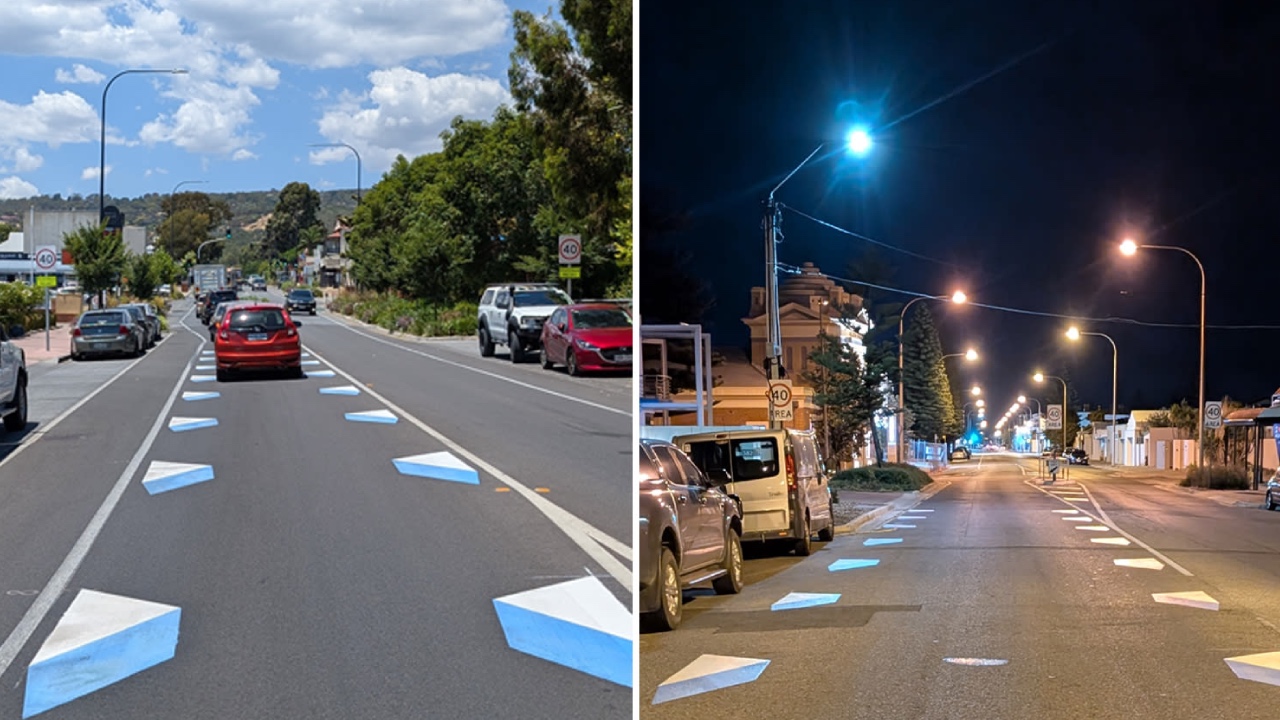Legal
Little-known road markings implemented to made roads safer

Aussie drivers could see a nationwide roll out of new road markings in an effort to improve road safety.
While authorities continue to try to curb the number of people dying and being seriously injured on roads, many motorists have grown frustrated with state governments over the constant threat of hefty fines and the loss of demerit points.
Authorities are now looking at alternative approaches to help reach the ambitious goal of achieving zero deaths and serious injuries by 2050, without further over-saturating roads with camera detectors.
One new initiative, which is currently being trialed in Adelaide, is the introduction of new road markings intended to quickly grab the attention of drivers and alert them to a change up ahead without the threat of a fine or loss of demerit points.
Known as 'dragon's teeth', the three-dimensional road markings are meant to "increase driver attention and create a sense of warning," leading road safety scientist at the University of Adelaide Mario Mongiardini told Yahoo News.
If successful, the markings could be seen across the country, because they can be implemented "cheaply and quickly" by state authorities.
The road markings, which are made of thermoplastic, are easy for councils and road authorities to implement and are designed to be durable and offer friction and grip for cyclists and motorcyclists.
Mongiardini said inspiration for the markings came from Singapore, where they have adopted similar tactics.
"They noticed drivers started to become much more compliant," Mario explained. "So that is one source of inspiration."
Adelaide is not the only place they exist in Australia, with RAA Senior Traffic Engineer Matt Vertudaches, explaining "similar markings, without the 3D effect are used at school zones in other states such as NSW, where they indicate to drivers that there is an elevated risk and lower speeds may be more appropriate."
Dr Chris Stokes, another researcher at the University of Adelaide, warned that the markings must be part of a multifaceted approach to road safety, with this specific road treatment thought to only work effectively if they're used sparingly.
"You can't expect to have them around every corner, if that happens, people will quickly lose trust in the system," he explained. "They are not to be used where the environment speaks for itself."
The markings are supposed to be used as a "complimentary" tactic, to work in tandem with reduced speed limits and changing the texture of roads too.
"Hopefully if it's successful you may see them in some areas of Australia," Mongiardini said, but "don’t expect to see them all over the road, only where they are needed."
Image credits: RAA


